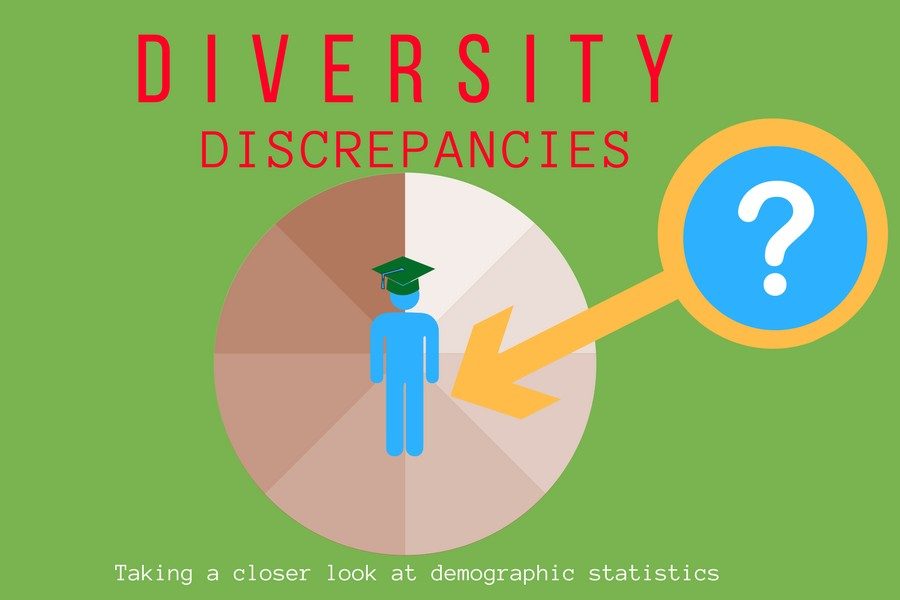Diversity Discrepancies: Admission data reveals missing numbers in Tulane’s most diverse class
Kila Moore, Associate Intersections Editor|November 16, 2017
“I sit in a class of 80 people and I am able to count the number of people of color on my two hands,” Lauryn Hudson, a member of Tulane’s Class of 2021, said. “And sometimes I can count them on one.”
Though the Office of Undergraduate Admission has made efforts to increase diversity, many students said they believe Tulane’s campus still is not diverse. This diversity issue, some say, might be easier to examine if Tulane’s demographic statistics were more transparent.
“If someone wants to know the ethnic statistics, a person has to go on a deep search through Tulane’s website, when this should not be the case,” Hudson said.
Some of this data can be difficult to locate simply because it is missing. The demographic percentages listed on the Office of Undergraduate Admission’s website for incoming freshmen in 2016, previously labeled as data for the Incoming Freshmen of Fall 2017, equal a total of 94.99 percent, leaving 5.01 percent of the student populated unaccounted for.
“We report based on categories set forth by the federal government through the IPEDS,” Bradly Booke, assistant vice president for admission and retention initiatives, said.
Those IPEDS categories include American Indian, Asian, black, caucasian, Hispanic, Hawaiian/Pacific Islander, multiracial, unknown and non-residential alien. The Tulane Office of the University Registrar and Tulane Office of Undergraduate Admission, however, do not include the category of unknown or non-residential alien. Both offices do include a category of other, and the Admission office uses the phrase international in lieu of non-residential alien.
These inconsistencies of the data mean that many of the international students at Tulane who might identify as non-residential aliens or unknown, or even those who might also identify with their ethnic or racial groups, were counted only as international students. As a result, 5.01 percent of students in the Class of 2020 are left out of admission data.
It also means that for some students, an unnecessary dichotomy is created between native students and international students of color.
“It creates some distance with some Asian-Americans and some international students, because they may think we’re very different. But I think we’re not very different because we’re all Asian,” freshman international student Lisa Li said.
Additionally, the international category can often be conflated to be contributory to the university’s diversity data.
“There’re a lot of international students who are white but counted as students of color, and it’s just wrong,” sophomore Habby Wang said.
The Office of the University Registrar reports statistics to IPEDS, and the Office of Undergraduate Admission uses IPEDS’s guidelines. The percentages of each ethnic group for Fall 2016 undergraduates on the Registrar’s website, the Admissions’ website and IPEDS’s website do not match.
Even when the percentages of each ethnic group on each site are similar in some respect, there are differences in the data that cannot be accounted for by rounding.
There are also disparities between the total number of undergraduate students in general, which can inflate and conflate the number of students in each ethnic group. The ethnic percentages were the same on the admissions website and the freshman profile on the registrar for the frshmen 2016 class, but the total number of freshman was different on each site.
“The data on the admission website is accurate unless you see something to the contrary,” Booke said. “We are currently updating our data, and this should be complete towards the end of this month.”
Narrowly-defined categories coupled with inconsistencies in reports have led some students to say that prospective students might find it disheartening to be unable to find concrete data about the number of students of color at Tulane. Some have also expressed worry about the way this data reflects Tulane’s recruitment and retention profile, and without accurate information to represent the demographics on campus, it might prove difficult to address the problems that students of color face, including representation and inclusivity.
“Tulane is not diverse, and it will be a lot easier to tell the truth on the diversity issue on campus instead of lying,” Hudson said. “This will prevent a lot of disappointment if they tell their potential students that fact and say that they are working on the issue of diversity on campus.”
Leave a Comment
- Admissions
- african american
- demographics
- diversity
- international students
- ipeds
- Kila Moore
- Latinx
- registrar
- tulane admissions
Your donation will support the student journalists of Tulane University. Your contribution will allow us to purchase equipment and cover our annual website hosting costs.

















Understanding minority • Nov 26, 2017 at 6:00 pm
In response to the student saying “It’s ok to be white” – Nobody said otherwise. Tulane’s lack of diversity is quite disappointing and the fact that the school fields such close-minded individuals is a testament to the fact that the schools needs greater diversity to expose it’s students to the real world.
Dave • Nov 18, 2017 at 9:06 am
It’s ok to be white